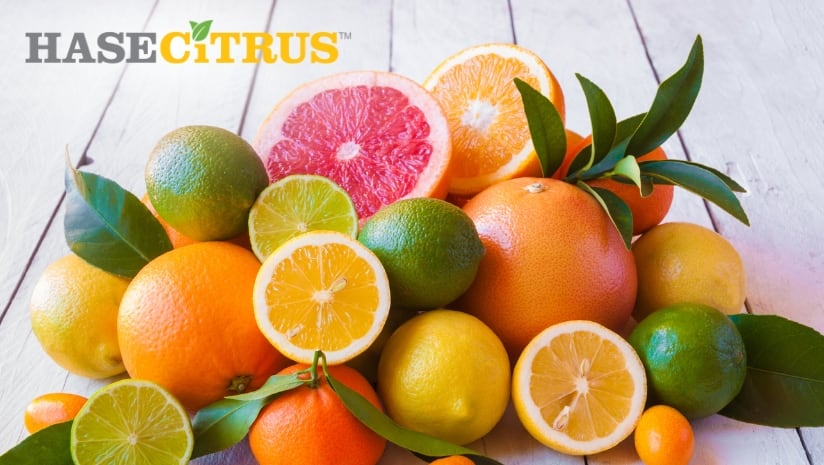Each day, over 150 million North Americans drink coffee or tea and that number only continues to grow each year. In fact, tea and coffee are the two most popular beverages in the world, according to U.N. Food and Agriculture Organization data. While tea still dominates globally, the U.S. is rapidly increasing its coffee consumption. In a study by NPD, U.S. consumers drank over 44.5 billion servings of coffee in 2020, and consumption of tea is also rising.
As demand for coffee and tea continues to grow, consumers expect more from the category in terms of flavor and taste experience, functional ingredients, and “better-for-you” health & wellness benefits. In this highly competitive category, flavor and taste are the most critical aspects for the success of coffee and tea products – which should be an area of increased focus for beverage companies in product development.
In recent years, the growth of coffee and tea has coincided with a shift in demand for beverage convenience. The ready-to-drink (RTD) coffee and tea category has flourished, as consumers seek convenient ways to enjoy their favorite café creations on-the-go, or from the comfort of their homes – especially during the pandemic. This trend has led to a boost of product innovation in the RTD coffee and tea category, resulting in myriad new products like cold-brew, ‘hard coffee,’ sparkling tea, kombucha, natural green tea and others.
Nowhere is this growth more obvious than with the rise of cold-brew coffee. Over the last five years, cold-brew coffee has grown from a relatively obscure café menu item to a mainstream RTD option, widely available at every supermarket and convenience store across North America. According to a report by Grand View Research, the global cold brew coffee market is expected to grow at a compound annual growth rate (CAGR) of 25.1 percent from 2019 to 2025, shifting from $339.7 million in 2018 to more than $1.63 billion by 2025. North America accounts for more than 70 percent of global cold brew coffee consumption. While this impressive growth is partially fueled by foodservice, where the cold brew trend originated, RTD options have been a part of the category for years and remain at the forefront of innovation and flavor development.
The COVID-19 pandemic has only increased awareness of health and wellness among consumers, leading to a spike in products that are perceived to deliver better-for-you (BFY) attributes. This trend has put the spotlight on functional beverages like tea, leading to increased demand for products like green tea offering weight-loss benefits, white tea providing immunity support or chamomile tea, which induces relaxation and promotes sleep.
The challenge that brands face with both single-serve and multi-serve RTD coffee and tea is creating enjoyable, great tasting beverages that also deliver on the broadening demands consumers have for these beverages, such as reduced sugar, extra caffeine, functional ingredients, or milk alternatives. The roasting and brewing process that gives coffee and tea their rich flavor also inherently makes these beverages bitter or acidic. This issue is even compounded in RTD coffee and teas, since these products are designed to maintain a fresh taste over an extended period of time. In the past, the issue of bitter or acidic coffee and tea was addressed by masking these unwanted top notes with ever-increasing amounts of sugar and dairy products – usually at the expense of the naturally complex flavor of coffee or tea. Consumers want more out of their RTD coffee and tea beverages – without sacrificing the unique flavors that make these beverages great.
The flavor of coffee is especially complex, with a range of different sensory experiences that vary depending on the type and blend of coffee beans, the geographical source where they are harvested, roasting method, preparation techniques and more. These factors affect both the taste and aroma of a cup of coffee and define the overall flavor to consumers.
California-based T. Hasegawa USA is leading the industry in coffee and tea flavor development with revolutionary technologies designed to unlock the flavor potential of RTD coffee and tea products. In 2020, the U.S. subsidiary of global top 10 flavor & fragrance company T. Hasegawa Co. Ltd. in Japan introduced BOOSTRACT™ to the North American Market. This innovative technology adds or enhances the kokumi effect in foods and beverages – a crucial aspect of the coffee and tea taste experience.
Originally identified in Japan, the effect of kokumi (which translates to “rich taste” in Japanese) is the amplification of mouthfeel and depth of flavor in certain foods. Kokumi increases the richness of taste while maintaining balance between different flavors and is increasingly being recognized as the sixth taste modality after sweet, sour, salty, bitter and savory umami. The effect of kokumi also amplifies the richness food and beverage flavors – making it an effective tool for modulating flavors in a wide range of products.
Technical innovations like BOOSTRACT allow the flavor of coffee and tea to live up to its full potential using Maillard reaction. Increased kokumi in coffee and tea naturally highlights the flavor notes that consumers want in these beverages, while minimizing any undesirable tastes. In the past, many coffee and tea producers have focused on improving the taste of their product by emphasizing only flavor top notes. The exclusive magnification of kokumi provided by BOOSTRACT focuses on the middle and end flavor notes, to deliver a full, rounded coffee and tea experience with proprietary Maillard reaction flavors. Increasing the kokumi effect in coffee can also amplify any sub-flavors in these beverages, such as hazelnut or vanilla coffee, or matcha tea. To create an authentic-tasting RTD latte, a dairy-based BOOSTRACT can lift the coffee flavor notes while delivering a perfect tasting latte product. The novel technological varieties of Boostract offer distinct richness to chocolate, vanilla and other complimentary flavors commonly added to coffee and tea products.
A major focus in the RTD coffee and tea category is developing products with reduced sugar. This trend reflects the changing priorities of health-conscious consumers who want to reduce sugar intake, and seek-out products that are naturally sweetened, or feature alternative sweeteners with natural ingredients. In RTD coffee and tea products with reduced added sugar, our sweetness enhancer portfolio can increase the sweetness impact to make the beverages more palatable.
“While we originally developed BOOSTRACT to improve the kokumi mouthfeel of foods and beverages, this Maillard reaction technology is proving to have an abundance of benefits in flavor development, including the ability to maximize sweetness,” said T. Hasegawa director of sweet technology, Ibrahima Faye. “For example, a sweetness enhancer that we created for an RTD creamy blend of coffee and milk was able to cut the sugar in half from 50 grams per serving to 30 grams (up to 40 percent) – entirely by amplifying the natural sweetness in the beverage with Boostract while maintaining a balanced indulgence.”
One surprising benefit of innovative flavor technology like BOOSTRACT is potentially decreasing food waste. According to T. Hasegawa, refinements to the flavor of coffee and tea in single-serve pods allows for a significant reduction in the amount of product needed in each pod to produce a satisfying flavored beverage.
“The use of BOOSTRACT kokumi technology improves the flavor profile in our coffee and tea applications, creating a standardized flavor note for production,” said T. Hasegawa director of beverage applications Jeanene Martinez. “This uniformity of flavor has helped our customers significantly reduce the amount of coffee beans or tea extract required in single-serve pods, reducing product waste.”
While RTD coffee and tea options have grown steadily over the past decade, in this post-pandemic world, consumers are leaning into these already-popular beverages more than ever before. The shift to at-home working has transitioned consumers away from the traditional office coffee machine and boosted the role of RTD coffee and tea products – and high-quality flavor technology is at the center of this seismic shift in consumer behavior. While coffee and tea remain an important part of our daily routines, these beverages need to deliver the robust, complex flavor we crave – whether it’s at our local café or from the supermarket aisle. Innovations in flavor development are finding new ways to refresh the category, keeping coffee and tea the top choice for consumers in North America, and worldwide.
Food and beverage brands who are looking to take their coffee and tea products to the next level of flavor can explore the possibilities by contacting T. Hasegawa USA at www.thasegawa.com or by calling (866) 965-0502.








